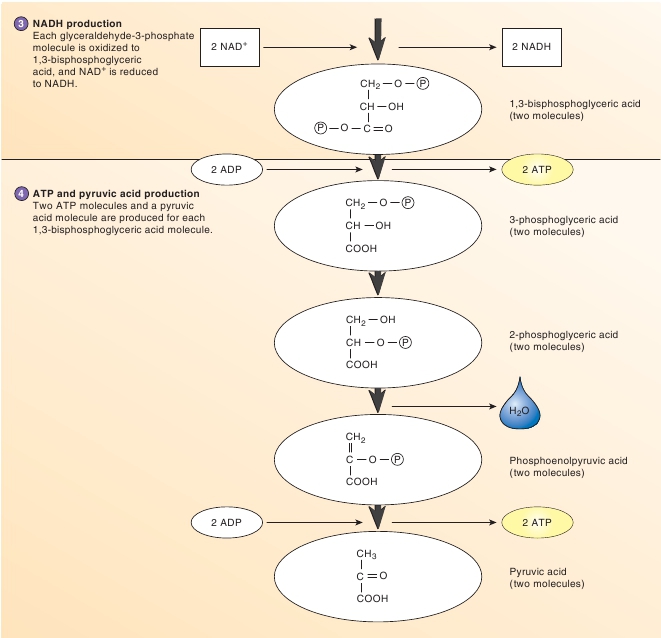938
PART 4 Regulation and Maintenance

PROCESS FIGURE 25.5
(continued)
2.
Lactate formation.
Pyruvic acid is first converted to
lacticacid,
a reaction that requires the input of energy from theNADH produced in step 3 of glycolysis. In cells, lactic acidusually releases a H
+
and is converted to lactate, the ionized formof lactic acid. Lactate is released from the cells that produce it,and blood transports it to the liver.

When oxygen becomes available, the lactate in the liver canbe converted through a series of chemical reactions into glu-cose. The glucose then can be released from the liver and trans-ported in the blood to cells that use glucose for energy. Thisprocess of converting lactate to glucose is called the
Cori cycle.
Some of the reactions involved in this process require energyderived from ATP that is produced by aerobic respiration. The
oxygen necessary for synthesizing the ATP is part of the
oxygendeficit
(see chapter 9).
ASSESS
YOUR PROGRESS
28.
Describe the four phases of glycolysis. What are theproducts of glycolysis?
29.
What determines whether the pyruvic acid producedin glycolysis is used in aerobic respiration or anaerobicglycolysis?
30.
Describe the two phases of anaerobic glycolysis. Howmany ATP molecules result from anaerobic glycolysis?
31.
What happens to the lactate produced in anaerobicglycolysis once oxygen becomes available?